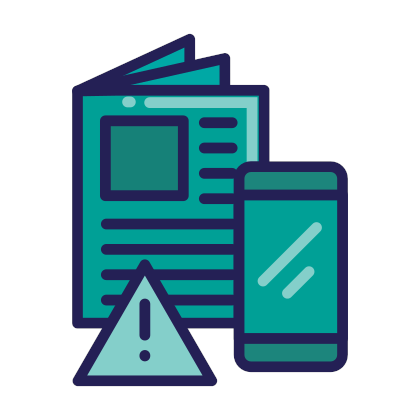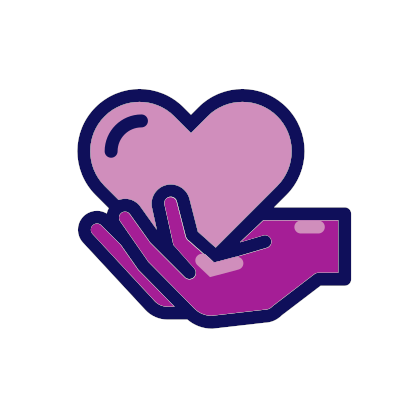Tackling discrimination

Schools can tackle discrimination by promoting democracy, respect for human rights and citizenship.
To ensure that all students’ needs are met equally, schools need to prioritise language and cultural competences, multiperspectivity in history and gender equality. In this way, students can acquire competences for democratic culture, to fulfil their potential in school as well as in society.
Facts & figures
Students with disabilities in Europe have higher early-school leaving-rates than their same-age peers.[1]
Black Caribbean students are three times more likely to be excluded from English schools than white pupils. [2]
A survey of nine EU countries showed that 33% of Roma students were in schools where most pupils were Roma, with 13% in Roma-only schools.[3]
What is discrimination?
Discrimination is treating a person badly or unfairly on account of a personal characteristic, such as national, ethnic or social origin, gender, language, religion, disability or sexual orientation.
There are two basic forms of discrimination:
- Direct discrimination – treating someone less favourably than you treat or would treat another person in the same situation, e.g., a school refusing to admit a student because they are Roma,
- Indirect discrimination – applying a provision, criterion or practice in the same way for all of a group which has the effect of unfairly disadvantaging people in the group who share a particular characteristic, e.g., a school uniform policy banning headgears for girls and boys may unfairly disadvantage Muslim girls and Jewish boys.
Discrimination can occur in almost any aspect of school life, from the attitudes and expectations of teachers to school rules and codes of conduct, selection and grouping practices, curricula, teaching methods and materials, changing facilities, career guidance, canteen food and the physical school environment.
Whatever form it takes – whether it be parallel school systems for different ethnic groups, concentrations of minority or disadvantaged children in the same school, or differential access to educational provision, it means a lower quality of educational experience for the students being discriminated against.
Why is tackling discrimination important at school?
Discrimination is a human rights violation. Article 14 of the European Convention on Human Rights contains a prohibition on discrimination with respect to any of the rights and freedoms guaranteed under the Convention. Article 2 of Protocol No.1 requires the state to ensure that all individuals have access to its formal educational provision.
“No person shall be denied the right to education.”[4]
“The enjoyment of the rights and freedoms set forth in this Convention shall be secured without discrimination on any ground such as sex, race, colour, language, religion, political or other opinion, national or social origin, association with a national minority, property, birth or other status.”[5]
Tackling discrimination is not simply a duty laid on schools by the European Convention of Human Rights, it is also important for student well-being and educational success. Children and young people who are treated unfairly or discriminated against are more likely to have:
- negative attitudes to school
- lower levels of motivation and academic achievement
- a higher risk of dropping out of formal education
- experience of bullying
- mental health problems.
Feeling different or ‘less’ than others can be an isolating experience. Over time it undermines an individual’s capacity for participation in society, e.g., their sense of self-efficacy, openness to other cultures and beliefs, tolerance of ambiguity and flexibility and adaptability - all of which lie at the heart of the Council of Europe Reference Framework of Competences for Democratic Culture.
Lack of opportunity due to discrimination in school also damages society. It intensifies social divisions, fuels xenophobia and intolerance and undermines social cohesion.
“States should adopt a combination of strong anti-discrimination measures and policies that promote more inclusive education systems where all children learn together. This is not a utopian project, but an achievable goal that can ensure more equal treatment of all children and, in the long term, improve social cohesion”[6]
What are the challenges?
One of the challenges facing the tackling of discrimination in schools is a lack of data. European-wide statistics specifically focused on discrimination in schools are scarce. Children with disabilities, for example, do not always appear in national statistics and may be ‘invisible’ to decision-makers, service providers and the public. Such children are particularly vulnerable to discrimination, however, and are often segregated in terms of educational provision.
These are not the only ‘invisible’ minorities in schools. For example, LGBTI students often feel they have to hide their sexual orientation at school to avoid victimisation.
Another key challenge is the existence of negative stereotypes about minority groups among teachers, parents, students and other school stakeholders. Such stereotypes are often deeply embedded in everyday school life and practice, so much so that they are taken as ‘normal’, e.g., stories and images in textbooks that reflect a stereotyped portrayal of the roles of women and men, girls and boys. Stereotypes help to fuel prejudiced and aggressive behaviour between students, lower expectations from teachers and negative attitudes from parents, e.g., refusing to allow their children to be taught alongside refugee or migrant children.
Stereotyping is difficult to root out in schools because its origins lie in wider society. This is exacerbated by the current preponderance of hate speech, fake news and conspiracy theories in digital media, especially social media.
The situation is compounded when minority groups are under-represented on school staff. Students lack role - models and teachers do not have the access to information about or insights into other cultures and ways of life that come with belonging to a more diverse profession. They lack the intercultural competences with which to create inclusive and quality learning environments, e.g., openness to cultural otherness, tolerance of ambiguity, plurilingual skills and knowledge and critical understanding of alternative cultures, religions and histories.
Tackling discrimination is more challenging when there is a lack of dialogue between schools and parents. Often this is on account of language difficulties, but it is also a problem where students’ parents work abroad leaving their children in the charge of elderly relatives or others.
How can schools get active?
Ensuring all learners of any age are provided with meaningful, high-quality educational opportunities alongside their peers requires a whole-school approach.
It begins by schools understanding who might be at risk of discrimination, what they can do to minimise discrimination and how they can support students at risk of discrimination. A good place to start is with an assessment of the current situation, identifying the strengths that exist in the school, but also needs and priorities. Consulting with school stakeholders is essential, especially students and, where possible, parents – e.g., using surveys, questionnaires, focus groups, etc. Given the sensitivities involved there is argument for collecting information on individuals’ experiences of discrimination anonymously.
Based on an assessment of the current situation it is possible to identify immediate priorities for policy development. Priorities will vary with the school, but might include, for example:
- language development
- gender equality
- accessibility of the physical environment
- intercultural competences.
The setting of initial priorities should go hand in hand with professional development for senior leadership teams as well as teaching staff. An element of personal as well as professional reflection is essential to the tackling of discrimination in school. In particular, it is important for school staff to be able to consider their own beliefs and values with regard to discrimination, including their own unconscious biases and prejudices.
Schools can then turn to the longer-term aspiration of creating a culture of non-discrimination. Central to this process is the challenging of negative stereotyping, both in classrooms and around the school. This can be done in a variety of ways, including:
- challenging stereotypes when they are heard
- discussing stereotypes with students
- identifying stereotypes in the curriculum
- highlighting stereotypical images and roles in textbooks
- allocating posts of responsibility equitably
- choosing different ways of dividing up students
- providing a range of role-models
- setting up mechanisms for monitoring incidents of discrimination.
Challenging stereotypes goes alongside the promotion of inclusion and an appreciation of the benefits of diversity in school life. This can take different forms, including:
- using inclusive language
- including human rights, democratic citizenship and intercultural education in the curriculum
- encouraging the discussion of controversial issues
- promoting student voice
- involving students in peer education and peer mediation activities
- welcoming parents and involving them in school decision-making
- forming partnerships with different organisations and groups in the community.
[1] Education section of the The European Disability Forum
[2] Article: UK: Racial discrimination is a reality in schools and classrooms. Education International
[3] EU Fundamental Rights Agency, “Second European Union Minorities and Discrimination Survey (EU-MIDIS II) Roma – Selected findings” (2017).
[4] ECHR, Article 2, Protocol No.1
[6] Position paper: Fighting school segregation in Europe through inclusive education by the Council of Europe Commissioner for Human Rights
 Resources on Tackling discrimination
Resources on Tackling discrimination
 Related schools projects
Related schools projects
Address: M. PAPAIOANNOU 1, AVLONAS 190 11
Country: Greece
Project: Bridging languages and memories to foster multiple identities: “Never leave your backpack behind!” (“Backpack ID”)
 Working language during the project:
Working language during the project:
- Greek
- English
- German
- Italian
- Swedish
- Farsi
 Themes of the Council of Europe campaign “FREE to SPEAK, SAFE to LEARN - Democratic Schools for All” covered:
Themes of the Council of Europe campaign “FREE to SPEAK, SAFE to LEARN - Democratic Schools for All” covered:
- Making children’s and students’ voices heard
- Addressing controversial issues
- Preventing violence and bullying
- Tackling discrimination
 Competences from the Reference Framework of Competences for Democratic Culture (CDC) addressed and where / how they were integrated:
Competences from the Reference Framework of Competences for Democratic Culture (CDC) addressed and where / how they were integrated:
- Valuing cultural diversity
The specific competence is among the main objectives of the project. The personal books, the e-book and the videos that were created by the students aimed at revealing the students’ multiple identities and diversity as a source of power and richness. - Linguistic, communicative and plurilingual skills
The project is based on students’ expression and communication. It encourages them to be flexible and discover ways in order to overcome obstacles so as to express themselves creatively and communicate using a variety of means. - Knowledge and critical understanding of the self
While working on their personal books as well as on the material produced by their classmates, the pupils were urged to express their thoughts and emotions, to reflect on their motives, values and beliefs, to challenge their prejudices and stereotypes and to work on the relationship between them and the wider context they live in.
 Target group age range:
Target group age range:
- 11-15
 Level of education:
Level of education:
- Lower secondary education
Short description of the project:
1st Gymnasio Avlona is a secondary school in a semi-rural area in Attica. The area has been host to a large number of immigrants over the last decades. Furthermore, a refugee reception centre was set up very close to school four years ago. Adolescents from this reception centre are pupils at our school. As a result, some classes have up to 37% immigrant/refugee pupils. Therefore, issues such as inclusion, tolerance, diversity, intercultural understanding, human rights, discrimination, and culture of democracy in school everyday life are crucial for our school.
The above issues are the core of our project that is part of a 3 year Erasmus KA2 programme entitled: “Bridging languages and memories to foster multiple identities: “Never leave your backpack behind!” (“Backpack ID”) with 7 partners: two universities, one network, one municipal reception unit, one NGO, one research centr and our school.
The main purpose of the project is to promote the inclusion of refugee children and adolescents at school while fostering harmonious inter-group relations in local communities. As part of this programme, our school took part in the design of the project, in the production of the educational material and in the development of innovative practices. We also led the pilot implementation required for most of the stages.
More specifically, using a narratives multimedia approach, the pupils who participated created their Personal Books. The Personal Books are multi-dimensional and include written narratives, graphs, maps, photographs, videos, music, songs, hobbies or recipes, which reflect the pupils’ personal and family history as well as their contemporary everyday life. After the collection and selection of the Personal Books, we created an e-book and some videos. At the next stage, we developed teaching scenarios and we created videos reflecting the teachers’ experience, to be included in the anthology and the teachers’ kit that were produced.
In addition,
- a) The innovative Backpack-ID programme was implemented in front of the whole school during the thematic week which was closely linked to the notion of human rights.
- b) The Backpack-ID programme was linked to the “Reference Framework of Competences for Democratic Culture”. More specifically, the same narratives multidimensional approach was used to help the pupils reflect on their democratic competences, speak about their experiences, and prepare their portfolio.
- c) The Backpack-ID programme was linked to the programme: “School for All – Integration of Refugee Children in Greek Schools” (Greek Ministry of Education, funded by the European Wergeland Center).
- d) A part of the Backpack-ID material will be included in the adolescent museum we are creating at school, the main aim of which is to make pupils’ voice heard on several aspects of their everyday life.
- e) The Backpack-ID programme was presented by teachers of our school to teachers and stakeholders involved in refugee education as an example of our school’s good practices (e. g. seminars: a) Teach4Integration (EKPA & UNICEF), b) “It Could be Me – It Could be You” (Hellenic Theatre/Drama & Education Network & UNHCR Greece), c) Freinet schools network)
 Aims/objectives
Aims/objectives
The main purpose of the project is to promote the inclusion of refugee children and adolescents at school while fostering harmonious inter-group relations in local communities. It also aims at empowering all students, both new-comers and majority-group members, and places emphasis on students’ own multiple group memberships and multiple skills and assets.
The main objectives pursued by Backpack-ID are:
- 1. Empowering students by encouraging them to draw on their cultural, linguistic, and other identity resources;
- 2. Creating a safe space, developing an inclusive atmosphere and promoting intercultural awareness in school;
- 3. Making children and students’ voices heard;
- 4. Promoting students’ ability to reflect on similarities and differences amongst them, and on the positive elements of diversity;
- 5. Mapping the variety and multiplicity of students’ identity resources on a comparative transnational basis;
- 6. Strengthening the ties between school, family and local community;
- 7. Producing a set of comprehensive, innovative educational materials for multi-media use by students and teachers.
 Expected results/outcomes
Expected results/outcomes
Participants are expected to:
- Become familiar with the concept of multiple origins and multiple identities.
- Realise that multiple identities are elements of enrichment and empowerment, and realise the complexity of their own identity and their own origin.
- Recognise the pupils’ right to be heard and feel safe to express themselves.
- Develop the ability to recognise similarities and differences between people at different levels, and be open to learning about the differences in those around them.
- Be able to challenge their preconceptions and ask more in-depth questions about themselves, the differences they see in others, and the world around them.
- Develop their sense of self-esteem as a result of the systematic work with their identities.
- Improve their literacy in the new language.
- Realise and strengthen the bonds between their family, their school and their social environment/local community.
 Changes
Changes
“Working with the Backpack in the classroom gave teachers the opportunity to design experiential lessons based solely on material created by teens. The students in the class worked on texts, videos, and drawings that had been created by their peers. This was something that both children and teachers experienced for the first time, as most lessons are usually based on textbooks written by adult writers. In contrast, during this project, we worked on material created by 12, 14 and 16-year-old students. This mobilised the pupils a lot. But beyond that, it empowered them. The students felt that it was possible for their own speech to be part of the school curriculum. They thus started talking in a way that most of them had never done before. Through this process, we got to know each other better, even those we thought we already knew well. Somehow, Backpack ID gave a voice to the children, gave a voice to the students and brought them to the fore.
The fact that the material is created by children from different countries - Greece, Italy, Albania, Germany, Afghanistan, Syria … led to this change. In addition, it is multilingual and multimodal. These characteristics particularly unlocked the refugee children. A comfortable atmosphere of tolerance and acceptance of various ways of communication was created. Our refugee students began to struggle to express themselves in many ways and in any language they could...” (from a video included in the teachers’ kit)
“What impressed me is the process of searching for family stories with the kids. Their initial attitude was awkwardness. But little by little, step by step, by insisting and being patient, we managed to lead them to discover details about their lives. The involvement of the family was something that excited all the members and the students and the parents. We, the teachers, as well, discovered and saw the children in a new light. This was a great joy. The parents embraced the whole procedure with great enthusiasm and were very supportive of their children's research. The children shared their stories not only with us but also with their classmates. This gave them the opportunity to get to know each other better, more deeply and, different relationships were thus developed.” (from a video included in the teachers’ kit)
 Challenges you faced
Challenges you faced
The main challenges we faced were:
- How to link the project with the school curriculum
- How to create a safe environment which would help the participants to express themselves and communicate
- How to overcome students’ standard mode of expression or standardizing their mode of expression
- How to persuade ourselves – the teachers - to stand behind and give more space to the pupils.
 Time-frame of the project:
Time-frame of the project:
1/9/2017- 31/12/2020
 Council of Europe materials on citizenship and human rights education used while preparing or implementing your practice:
Council of Europe materials on citizenship and human rights education used while preparing or implementing your practice:
- Reference Framework of Competences for Democratic Culture
- All Different – All Equal
- Compass
- Compasito







